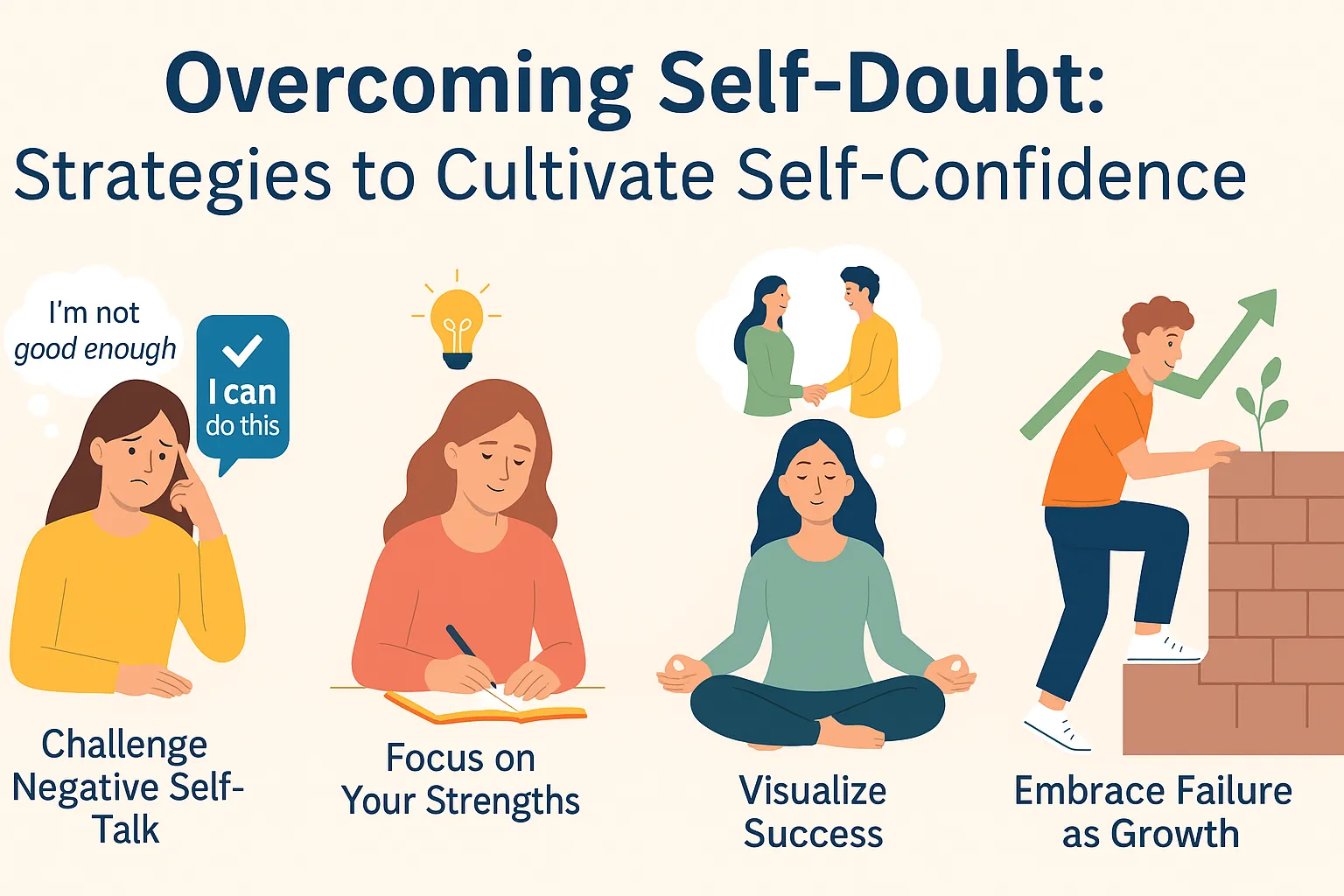Self-doubt is a common experience for many people, whether it’s at work, in relationships, or when pursuing personal goals. It can hinder progress, prevent us from trying new things, and even diminish our overall sense of worth.
However, overcoming self-doubt is possible, and it begins with cultivating self-confidence. Building confidence is not about being perfect; it’s about trusting your abilities and knowing that you have the strength to handle life’s challenges.
In this article, we’ll explore strategies to help you overcome self-doubt and build the self-confidence necessary to thrive in every area of your life.
Understanding Self-Doubt and Its Impact
Self-doubt is the feeling of uncertainty about your abilities, decisions, or worth. It can manifest in various ways, such as fear of failure, imposter syndrome, or feeling like you’re not good enough. This feeling can lead to procrastination, avoiding challenges, and being overly critical of yourself.
While it’s natural to experience self-doubt from time to time, consistently struggling with it can limit your potential and hold you back from personal growth. The key is to shift your mindset and learn to embrace your strengths and achievements.
Strategies to Overcome Self-Doubt and Cultivate Self-Confidence
- Challenge Negative Self-Talk One of the most significant contributors to self-doubt is negative self-talk. It’s the inner critic that tells you you’re not good enough or that you’ll fail. To overcome self-doubt, it’s essential to recognize these negative thoughts and challenge them. Ask yourself:
- Is this thought based on facts or assumptions?
- What evidence do I have to support this belief?
- What would I say to a friend who had similar thoughts?
- Focus on Your Strengths and Achievements Self-doubt often arises from focusing on perceived weaknesses or past mistakes. To build self-confidence, take time to reflect on your strengths and past accomplishments. Write down a list of your successes, big or small, and remind yourself of your capabilities. Celebrate your achievements, and let them serve as a reminder of your potential. Additionally, keeping a “success journal” can help track your progress and reinforce the positive aspects of your journey. This practice helps shift the focus from doubts to your strengths and successes.
- Set Realistic Goals and Take Action Breaking down big tasks or goals into smaller, manageable steps can reduce feelings of overwhelm and self-doubt. When you set small, achievable goals, you build confidence by experiencing progress and success. Each step forward is a reminder that you can handle challenges and accomplish what you set your mind to. It’s important to take consistent action, even if it’s just one small step at a time. Taking action reduces the power of self-doubt and shows you that you are capable of making progress.
- Practice Self-Compassion Often, self-doubt stems from being overly critical of ourselves. Instead of being kind and understanding toward yourself, you might focus on perceived flaws or mistakes. Practicing self-compassion involves treating yourself with the same kindness and understanding that you would offer a friend in a similar situation. Remind yourself that making mistakes is part of being human. Instead of criticizing yourself for perceived failures, offer words of encouragement: “It’s okay to make mistakes. I’m learning, and I’ll do better next time.”
- Surround Yourself with Positive Support The people you surround yourself with play a significant role in your self-confidence. Seek out positive, supportive individuals who uplift you and believe in your abilities. Avoid toxic environments or relationships that reinforce your self-doubt. Additionally, finding mentors or role models who inspire you can help build your confidence. Learning from others who have overcome similar challenges can offer valuable insights and encouragement.
- Visualize Success Visualization is a powerful tool for overcoming self-doubt and building confidence. Take a few minutes each day to visualize yourself successfully achieving your goals. Imagine how it will feel to reach your desired outcome, and let that feeling fuel your motivation. Visualization helps to rewire your brain to focus on success, boosting self-confidence and reducing the influence of self-doubt. This practice can be especially helpful before important events, such as presentations or interviews.
- Embrace Failure as Part of Growth Fear of failure is a significant contributor to self-doubt. However, failure is often an essential part of the learning process. Embrace failure as an opportunity to grow rather than as a reflection of your abilities. Understand that each setback offers valuable lessons and brings you one step closer to success. By viewing failure as a learning experience, you can let go of perfectionism and allow yourself the freedom to try new things without fear of judgment or mistakes.
Conclusion
Overcoming self-doubt and cultivating self-confidence is a journey that takes time, patience, and practice. By challenging negative self-talk, focusing on your strengths, setting realistic goals, and practicing self-compassion, you can gradually build the confidence you need to thrive.
Remember, confidence is not about being perfect—it’s about trusting yourself, learning from experiences, and embracing your potential.
You are capable of achieving great things, and by overcoming self-doubt, you can unlock your true potential.



